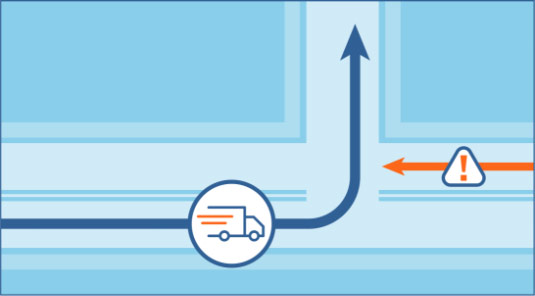Routing Operations Research
Operations research forms the backbone of the high-quality vehicle routing algorithms our clients come to expect from us.

What is operations research? It means operating efficiently, whether through maximizing or minimizing assets. For us, we have a very specific focus within operations research – vehicle routing and scheduling.
Approaching Operations Research:
Deterministic vs. Probabilistic
Exact vs. Heuristic
There are several ways one can approach operations research.
Our industry experts take the deterministic approach with heuristic procedures to solve complex routing challenges. Through this approach, we feel confident we have the inputs necessary to produce fast, accurate solutions. The speed with which we can solve large problems by using operations research tools sets us apart as a world leader providing route optimization solutions for newspaper, postal/parcel, public works and utilities clients around the globe.
By using this approach in ways most organizations don’t think of, our routing solvers can build off of a network of tools and operations research disciplines that our team continues to refine. It’s all about generating high-quality, accurate and efficient solutions that help the industries we serve improve operations.
Practical vs. Objective
Operations research always thinks about an objective function, but we think about it in more practical ways. If you don’t consider the balance of your workload, geographic compactness or sequence of stops, you won’t get measurable results.
Our operations research approach and our experience in our core industries ensure the important variables factor into your daily route plans. It’s not enough just to minimize distance, as travel speeds can differ by street. We also prioritize safety. Our team will never create a route that reduces distance and time but puts your drivers’ safety at risk.
One of the many factors we evaluate is the safety of turns. Imagine driving down a busy arterial street and needing to enter a neighborhood by making a left turn. In doing so, you only need to be concerned about oncoming traffic in one direction. When you leave that neighborhood and return to the busy arterial street, however, that left turn now requires you to cross traffic in both directions. The risk of an accident increases because you are crossing multiple lanes moving in two directions, meaning that both left turns are not equal. It’s not just enough to say, “no left turns.” A sequencing algorithm must understand the difference between these left turns and the way safety and efficiency are affected.


Impact on Industries
The approach we take with operations research allows us to continually improve and deliver solutions that adapt to the evolving needs of your operations. We build our solutions first and foremost based on detailed travel networks that take into account many real-world driving factors. Our goal is to achieve an accurate, efficient solution even faster.
Newspaper
Newspapers still serve large customer bases, and the changes to home delivery volumes make it even more critical to run your operations more efficiently. The challenge becomes, how do you maintain efficient daily route plans that are profitable for you and your carriers? We recognize newspaper distributors must keep up with frequently changing sets of stops. This is where our proven newspaper routing tool comes into play.
Postal & Local Delivery
The advent of e-commerce has pushed postal organizations that focused on letter mail, other couriers, and even newspaper delivery companies, into parcel delivery. The solutions needed go beyond the historic notions of delivery routes and expand into handling parcel routes that differ daily. We see this specific challenging continuing to evolve and grow, and we stand ready to ensure you remain competitive.
Waste Collection
When it comes to waste collection, we recognize three unique routing problems. Residential – Vehicles must travel every street and typically serve the same side for safety reasons and due to automation on side-load trucks. Commercial – Solving this problem revolves around periodic routing patterns on a sparser geographic scale. The solution must consider the schedule as well as the location of stops. Roll-off – Unlike the previous two, here we are more concerned with scheduling types of stops together to decrease the number of long hauls to move one large bin at a time or going to and from landfills. Outside of waste management, we have extensive experience in street sweeping, snow removal, work orders and inspections.
Utilities
We understand the challenges faced by this industry, from reading meters to inspection and repair work order management. Until recently, the majority of work was done by meter readers walking and driving their routes, eyeballing each meter. As this evolved over time to vehicles reading meters from streets away, route planning needs changed. Now our solutions for utility meter reading include automated meter reading (AMR) optimization, which helps dispatchers determine the minimum set of streets to traverse and the optimal sequence for driving those streets. As we continue monitoring the changing technologies within the industry, we continually evolve our industry-specific solutions.

See How Much You Could Be Saving
Discover the financial impact of RouteSmart with our ROI Calculator. Enter your data for insights on savings and efficiency gains.